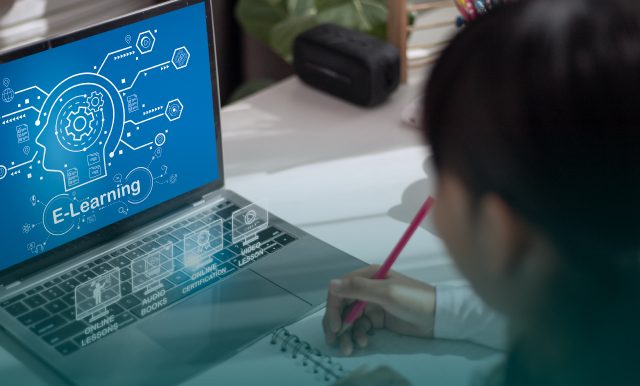How Technology is Revolutionizing the Education Sector
Technology is transforming every industry, and education is no exception. How technology is revolutionizing the education sector is evident in classrooms, online platforms, and remote learning systems. The integration of digital tools is improving the learning experience, making education accessible, personalized, and efficient.
Emerging Technologies in Education
The Role of Artificial Intelligence (AI)
AI is playing a huge role in modern education. It personalizes learning by analyzing students’ progress and adapting the content to match their needs. AI-powered platforms, like chatbots and virtual tutors, assist students by answering questions instantly, enhancing their learning journey.
The Impact of Virtual and Augmented Reality
Virtual Reality (VR) and Augmented Reality (AR) are creating immersive experiences for students. Subjects like history, science, and geography come alive through interactive simulations. How technology is revolutionizing the education sector includes turning learning into a hands-on experience with tools like VR headsets and AR apps.
The Power of Cloud Computing
Cloud-based platforms have made education accessible worldwide. Students and teachers can store, share, and collaborate on resources in real time. Platforms like Google Classroom and Microsoft Teams allow seamless communication and resource sharing, regardless of location.
Digital Transformation in the Classroom
Interactive Learning Tools
Traditional textbooks are being replaced by smart boards, tablets, and educational apps. Tools like Kahoot, Quizlet, and online games encourage students to engage actively. Digital tools make learning interactive and fun, keeping students motivated.
Online Education Platforms
Online platforms like Coursera, Udemy, and Khan Academy have opened doors for students to learn anytime, anywhere. These platforms offer diverse courses that cater to all age groups and skill levels. How technology is revolutionizing the education sector is visible through the flexibility these platforms provide.
E-Learning and Remote Learning
The COVID-19 pandemic accelerated the adoption of e-learning. Video conferencing tools like Zoom and Google Meet made remote education possible. Today, students can attend classes, complete assignments, and participate in discussions without stepping into a physical classroom.
Cybersecurity and Privacy in Education
Protecting Student Data
With increased online education, data privacy has become critical. Schools and platforms now invest in cybersecurity to protect students’ personal information. Secure servers, encrypted communication, and authentication tools ensure a safe learning environment.
Combating Cyber Threats
Hackers often target educational platforms, making cybersecurity training essential for educators and students. Schools are integrating digital safety lessons to teach students how to protect their data online.
The Role of AI in Cybersecurity
Artificial intelligence helps detect and prevent cyber threats in real time. AI tools monitor activities on educational platforms, ensuring secure and smooth access for students and teachers.
Read more : https://sumosearch.io/
Gadgets and Innovations in Education
Smart Devices in Classrooms
Smartboards, tablets, and projectors have replaced traditional teaching tools. These gadgets help teachers deliver content in a more dynamic and engaging way. Students can explore subjects visually, making it easier to retain information.
Wearable Technology for Learning
Devices like smartwatches and fitness trackers promote health and focus in classrooms. They monitor student activities, ensuring they stay active and productive. How technology is revolutionizing the education sector is visible through these innovative tools that enhance the overall learning experience.
Robotics in STEM Education
Robotics is becoming popular in science, technology, engineering, and math (STEM) classes. Students use robots to learn coding, mechanics, and problem-solving skills. It makes learning practical and prepares students for future careers in technology.
Technology and Society: Education for All
Bridging the Gap in Education
Technology is helping eliminate educational inequality. Online classes and affordable devices are making quality education accessible to students in remote or underprivileged areas.
Promoting Lifelong Learning
Digital tools allow people of all ages to learn new skills. Adults can access online courses to upskill or switch careers. This flexibility has made education a continuous process.
The Social Impact of Technology in Education
Technology connects students worldwide, fostering collaboration and cultural understanding. Students can participate in global projects, enhancing teamwork and communication skills.
The Future of Technology in Education
The advancements in AI, AR, and cloud-based learning will continue to shape education. Schools are adopting smart classrooms, and universities are shifting to hybrid models of teaching. How technology is revolutionizing the education sector will only grow as new innovations make learning smarter, faster, and more inclusive.
Conclusion
How technology is revolutionizing the education sector is evident in classrooms, online platforms, and remote learning tools. Technology is bridging gaps, making education interactive, accessible, and secure. From AI-powered learning to VR simulations, tools like IgAnony are also helping streamline digital resources and interactions. The future of education looks bright. Embracing these changes ensures students gain the skills they need for tomorrow’s world.







